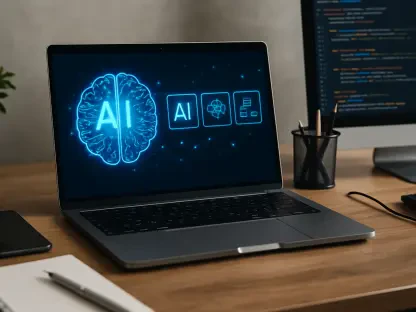Imagine a digital world where over 26,000 vulnerabilities were disclosed just two years ago, and the number continues to climb with each passing day, posing severe risks to software integrity. In this landscape, a single flaw in software can cost millions, with the average data breach price tag sitting at $4.24 million. Secure coding practices stand as the frontline defense against such catastrophic risks, ensuring that applications are built to withstand sophisticated cyber threats. This review delves into the critical role of secure coding in modern software development, evaluating its core principles, emerging tools, and real-world impact. The aim is to provide a clear picture of how this technology shapes resilient systems in an era of relentless cyberattacks.
Core Foundations of Secure Coding
Secure coding is a proactive methodology that embeds security into every phase of the software development lifecycle. Unlike reactive approaches that patch issues after they emerge, this practice focuses on writing code that inherently resists vulnerabilities. It prioritizes early identification of potential weaknesses, ensuring that software remains robust even under malicious intent. The significance of this approach cannot be overstated, especially when studies show that a staggering 90% of security issues stem from coding errors.
A key distinction in this domain lies between secure coding guidelines and standards. Guidelines offer flexible best practices, allowing developers to adapt security measures to specific project needs. Standards, on the other hand, enforce mandatory rules with measurable compliance criteria, often critical in regulated sectors like finance or healthcare. This differentiation ensures that organizations can balance adaptability with strict adherence to safety protocols, particularly under stringent legal requirements.
The relevance of secure coding is amplified by today’s threat environment, characterized by increasingly complex and targeted attacks. Cybercriminals now employ multi-dimensional strategies, exploiting even the smallest gaps in code. As a result, integrating security from the ground up is not just a best practice but a necessity for any organization aiming to protect sensitive data and maintain operational integrity.
Key Frameworks and Principles
OWASP Secure Coding Framework
The Open Web Application Security Project (OWASP) provides one of the most widely recognized frameworks for secure coding. Its Top 10 list highlights critical vulnerabilities, with Broken Access Control topping the chart, affecting 94% of tested applications. Mitigation strategies for such threats include strict authorization checks and robust session management, ensuring that unauthorized access is curtailed at every entry point.
Beyond access control, OWASP addresses issues like Injection Attacks through comprehensive input validation and parameterized queries. Cryptographic Failures are countered by adopting modern encryption protocols and minimizing sensitive data storage. These practices form a layered defense, tackling common flaws that frequently lead to breaches. Implementing OWASP guidelines ensures that developers address the most pressing risks systematically.
The framework also emphasizes proactive measures like threat modeling during the design phase to prevent Insecure Design vulnerabilities. By focusing on secure defaults and eliminating unnecessary features, OWASP helps reduce Security Misconfiguration errors. Such structured approaches are indispensable for building applications that stand firm against prevalent cyber risks.
Modular Design for Enhanced Security
Modular design is another cornerstone of secure coding, promoting architectures that isolate vulnerabilities through principles like loose coupling and high cohesion. This means modules operate independently with minimal interdependence, preventing a breach in one area from cascading across an entire system. The result is a more contained and manageable security posture.
Adhering to the single responsibility principle, each module handles a specific function, simplifying both security audits and maintenance. Well-defined interfaces further enhance safety by limiting exposure to potential threats, allowing controlled interactions between components. This design not only bolsters security but also improves scalability, making it easier to update or expand systems without compromising safety.
The benefits of modular architecture extend to testing and review processes. Smaller, focused components enable thorough security assessments, while improved code readability aids in identifying flaws. Organizations adopting this approach find that isolating issues becomes significantly more feasible, reducing the overall impact of any single vulnerability.
Emerging Tools and Trends in Secure Coding
Automation has transformed secure coding by embedding security checks into continuous integration and deployment (CI/CD) pipelines. Static analysis tools scan code for flaws without execution, catching issues early in development. Dynamic analysis, conversely, evaluates software during runtime, uncovering problems like memory leaks that static methods might miss. Together, these tools create a comprehensive safety net.
Dependency scanning solutions such as Snyk and Dependabot address risks from third-party components, a common weak link in applications. These tools automatically detect outdated or vulnerable libraries, offering remediation steps to keep systems secure. Their integration into development workflows ensures that external dependencies do not become gateways for attackers, a growing concern in interconnected software ecosystems.
AI-powered code review tools represent another leap forward, automating the detection of complex vulnerabilities like cross-site scripting or authentication flaws. By providing immediate feedback on pull requests, these technologies allow developers to address issues swiftly, freeing senior team members to focus on strategic tasks. However, proper configuration is vital to avoid false positives and ensure relevance to specific application contexts.
Real-World Impact and Applications
In industries like healthcare and finance, secure coding is non-negotiable due to strict regulatory demands. Compliance with standards ensures that patient data remains confidential and financial transactions are protected against fraud. Failure to adhere to these practices can result in severe penalties, underscoring the critical nature of secure development in such sectors.
A practical example lies in secure API development, where rate limiting prevents abuse by restricting request volumes within defined timeframes. This not only safeguards against denial-of-service attacks but also ensures fair resource allocation among users. Such mechanisms are vital for maintaining service stability in high-traffic environments, demonstrating the tangible benefits of secure coding.
Economically, the stakes are high, with post-deployment fixes costing up to 100 times more than addressing issues during design. Proactive secure coding mitigates these expenses, preserving budgets and resources for innovation rather than remediation. This financial incentive, coupled with enhanced system reliability, makes secure coding a cornerstone of sustainable software development.
Challenges in Adoption and Implementation
Despite its advantages, adopting secure coding faces significant hurdles, including inefficiencies in manual reviews. These traditional methods struggle to keep pace with rapid development cycles, often missing critical flaws. The gap between manual processes and modern demands highlights the need for automated solutions to maintain security standards.
Technical challenges also persist, particularly with third-party dependencies and API security. Managing external libraries requires constant vigilance to prevent exploitation, while APIs remain vulnerable to injection and authentication issues. Addressing these risks demands a combination of robust tools and updated practices tailored to evolving attack vectors.
Resistance to change, especially in legacy systems, further complicates adoption. Many organizations lack adequate developer training, perpetuating outdated coding habits. Overcoming these barriers involves sustained education efforts and the integration of automation, alongside updated standards to tackle emerging threats like post-quantum cryptography risks.
Future Outlook and Evolving Needs
Looking ahead, secure coding must adapt to new challenges, such as the anticipated post-quantum cryptography standards. Organizations need to inventory systems reliant on vulnerable public key cryptography and prioritize migration based on data sensitivity. Starting preparations now, from 2025 onward, ensures readiness for these transformative shifts in security paradigms.
Continuous updates to secure coding checklists are equally critical, incorporating lessons from recent breaches and evolving threat models. Regular developer training, through hands-on labs and real-world simulations, equips teams to handle novel vulnerabilities. This ongoing investment in skills development is essential for maintaining a strong security posture over time.
The long-term vision for secure coding involves building systems capable of withstanding increasingly sophisticated attacks. By integrating continuous monitoring and threat intelligence, organizations can prioritize the most exploitable vulnerabilities—often just 6% of disclosed issues. This strategic focus, combined with proactive practices, paves the way for truly resilient software architectures.
Final Reflections
Reflecting on this evaluation, secure coding proves to be an indispensable pillar in safeguarding digital systems against a backdrop of escalating cyber threats. Its structured frameworks, like OWASP, and innovative tools, such as AI-driven reviews, demonstrate remarkable effectiveness in preempting vulnerabilities. The real-world applications underscore its necessity across critical industries, while the challenges highlight areas for growth and adaptation.
Moving forward, organizations should prioritize integrating automation into their workflows to streamline security processes and reduce human error. Investing in regular training will empower developers to stay ahead of emerging risks, while early planning for post-quantum cryptography will mitigate future disruptions. By embedding secure coding deeper into development cultures, the path to building bulletproof systems becomes not just attainable, but a strategic imperative for long-term success.









